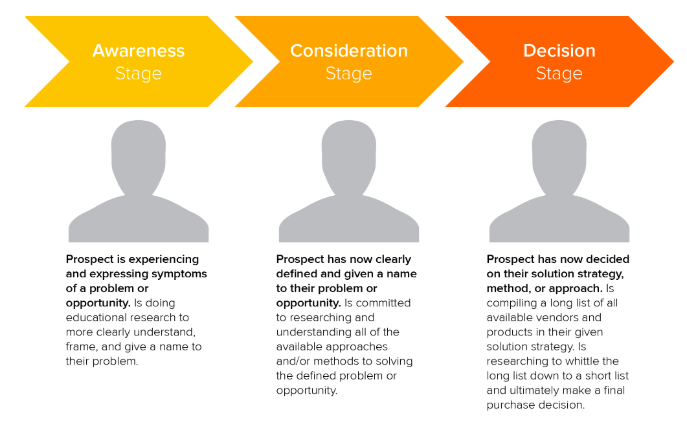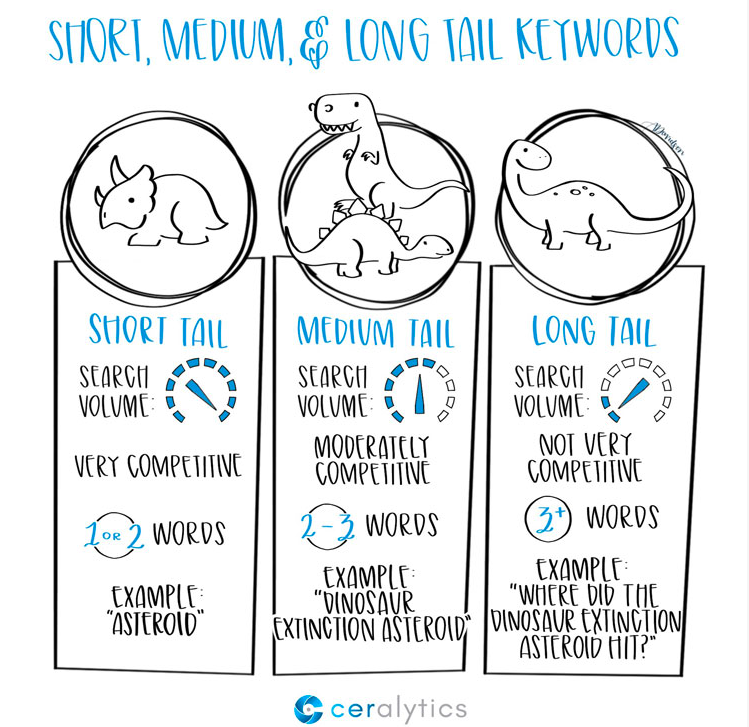
SEO is all about the keywords.
Just this statement alone gets business owners rushing to plug keywords into their website to get them to rank. They make guesses on what keywords they should rank for and hope for the best.
The issue is, how do you know if you are going after the right keywords and attracting the right kind of customers?
As a building material company, you don’t want searchers that are looking for painters or landscapers. You want leads that are interested in your services and products and are ready to buy.
With data-driven keyword research, you identify keywords that are both relevant to your business and draw in users that are most likely to work with you.
Here’s why keyword research is better than making guesses – and how to do it correctly to set yourself up for SEO success.
What is Keyword Research and Why is it Important?
Keyword research is like the “compass” that helps guide all of your SEO efforts.
It involves turning to the data to find keywords that your target audience is already searching for and that have high enough search volume and relevancy to make them worth targeting in your SEO.
The key here is data – hard numbers to tell you how many people are searching for these terms and how high of a priority they should be for your business.
By contrast, if you are simply relying on assumptions, you’ll have misguided efforts that can cost you time and money in the long run.
Why Keyword Research Matters for Building Material Companies
Whether you are doing your own SEO or are working with an agency, the proper keyword research will ensure that you are targeting terms with the highest potential for traffic and conversions. If done incorrectly (or not at all), you risk wasting your marketing budget on terms that aren’t going to make you money.
For example, if you sell engineered wood siding for houses, you don’t want to target keywords for simply “home siding” or “engineered wood”. These are far too broad.
You want to attract users that are looking for “engineered wood siding” or “buy wood siding” or, if searching locally, “find wood siding in [location]”. These terms are more specific and imply the intent to purchase vs to simply browse.
We’ll dig into the different types of keywords and how they align with steps of the Buyer’s Journey below.
Types of SEO Keywords
Most business owners have a list of terms in mind that they want to rank for – like “building materials” or “hardwood floors” or “best building material manufacturer”. Problem is, these terms tend to be too broad, have high competition, and don’t fit what users are actually looking for.
That’s why it’s important to know the different types of SEO keywords and how they fit in with a potential customer’s Buyer Journey.
This is the best way to identify terms that will draw in users that are searching for products like yours and that carry a higher potential for conversions.
Informational, Commercial, Transactional
There are three types of keywords that each related to a different stage of the Buyer’s Journey.
Those three stages are:
- The Awareness Stage – where a user is looking for solutions to a problem that they have
- The Consideration Stage – where a user knows what the answer to their problem is and is seeking more information to choose the best option for them
- The Decision Stage – where a user is weighing their options before making their final decision on what to buy or who to work with

Each of these stages relate to the intention of the user: to find information, to find options, and to make a decision on what to buy.
With this in mind, you can match your keywords to each stage by categorizing them as either:
- Informational
- Commercial
- Transactional
Informational keywords are those that users search to find educational content. Many refer to these as “question words” because users are typically searching for things like “how to…”, “why is…”, “how do I…”, “where is…”, and the like. At this stage, they are simply looking for ways to solve a problem that they have.
Commercial keywords are the primary terms that you want to aim for. These are the keywords that searchers use when they know that the answer to their problem is but don’t quite know where to get help. So, they are searching for things like “building supplies near me” or “best place to get x in [location]”.
One way to figure out if a term is a Commercial keyword or not is to Google it and see what comes up. If the results are primarily companies – ones that you would like to compete with – then this could be a term worth targeting.
Transactional keywords are terms that are used when users are near ready to buy. They are now at the stage where they are looking for prices, reviews, and “how to buy/sign up/subscribe”.
Like Commercial keywords, these are also very specific. Users will be searching for the exact name of the product or company. They just need that extra push to be convinced that your products are right for them.
Connecting Your Keyword List with Your Sales Funnel
It’s important that you identify & target all potential Commercial- and Informational-based keywords associated with both your audience and products.
Once you are able to categorize keywords, this will help you avoid going after terms that are too vague or that don’t fit that your audience is actually looking for.
For instance, someone who is searching “house siding” could be looking for house siding examples, where to find a contractor, or a product that you don’t even offer. It would be a waste of time to target this term.
If, however, they are searching for “where to buy wood siding in Bellevue” and you sell wood siding in the Bellevue area, this is worth going after. After all, it is relevant to your business and is attracting searchers that are clearly looking to buy.
Example for Building Material Companies
Here is what connecting your keywords to your sales funnel looks like in action:
Stage 1: Awareness (top of funnel) – Prospects know little about wood siding and turn to Google to learn more.
Potential Informational Keyword: “what is wood siding”
Potential Blog Post: “What is Wood Siding? 10 Examples for Your Home”
Stage 2: Consideration/ Research (middle of funnel) – Prospect knows a bit about wood siding but wants more information
Potential Commercial Keyword: “best wood siding for harsh weather”, “affordable wood siding examples”
Potential Blog Post: “Best Wood Siding Types for Harsh Weather”, “8 Affordable Wood Siding Options for Homeowners on a Budget”
Stage 3: Decision/Conversion (bottom of funnel) – Prospect knows which wood siding option is best for them and are ready to buy.
Potential Transactional Keyword: “where to buy wood siding in [ location ]”, “home wood siding manufacturers”
Potential Page: “Affordable Wood Siding in Bellevue – JJ’s Manufacturing, WA”
Note: We will dig into how to organize your keywords by type in the Create a Keyword-to-URL Map section.
A Note About “Navigational Keywords”
Another type of keyword that gets mentioned a lot is Navigational keywords.
This is when users are typing in a company or brand name into a search engine. This means that they are already familiar with the brand, but are wanting to find the correct website. These terms are really useful if your company is already well-known. You definitely want to get found if users are searching for your company name.
Broad/Short vs Medium Tail vs Long Tail Keywords
We have already discussed the issues with targeting keywords that are too broad. Broad terms, otherwise known as “short tail keywords” (due to how short they are) aren’t usually worth going after because they aren’t specific enough and/or the competition is too high.
You want to focus on keywords that have some kind of qualifier that make them relevant to the user’s intent. This is where medium and long tail keywords come into play.

Long Tail Keywords
Long tail keywords are very specific and include 3 or more words per query. Because they are so specific, they typically have lower search volume but also low competition.
Going after these terms doesn’t do much to tip the scales in terms of driving a lot of traffic to your site.
In fact, going after long tail keywords used to be the way to go, but now Google is getting smarter about determining the intent of the user, whether their search term is highly specific or not. So, terms like “where can I buy wood siding” and “where is the best place to buy wood siding” could yield similar results.
So, rather than creating a page or post for every possible variation of a long tail keyword, it’s best to create one solid piece of content that thoroughly covers what a user is searching for in regards to that topic.
Medium Tail Keywords
Medium tail keywords are those that are typically 3-4 words long and are pretty much the “sweet spot” when it comes to the keywords that you want to target.
That’s because they get adequate search volume without being too competitive. They are more specific than broad terms but aren’t too specific that they deter people that are looking for related products or services.
Next, we are going to talk about how to identify these keywords to begin with using data-driven SEO tools.
Getting Started with Keyword Research – Start With Known Data
If you have an existing website, you already have data to go off of. This is great. To get started, you will first look at what keywords you are already ranking for. Then, you’ll find other terms worth going after.
If you are a new business owner, you may be starting from scratch when it comes to keyword research. That’s okay – this guide is meant to help you start your journey off right.
Starting with Existing Website Data
If you have had a website for a while – and have been tracking your traffic and other analytics – you will have data that you can use to guide your ongoing keyword research.
The first two places to look are Google Analytics and Google Search Console.
Google Analytics shows you how much traffic you are getting and from which channels. In the Organic channel, you will often see what keywords users are searching for in order to find your site. However, many of these terms will be blocked out, so this option is limited.
Google Search Console works in a similar way to show what keywords are driving traffic to your site. You will also see your Position in the search engine results, the search volume for the term, the cost per click (for pay per click ads), and more. This data will be much more useful.
SEO Tools
The third and best option is to use a premium SEO keyword research tool like SEMRush. SEMRush provides highly accurate data and gives you much more insight into what keywords you are ranking for, how you are ranking, and what terms you should be ranking for.
You can try SEMRush for free (limited version) or get the paid version (approximately $100 per month) to get started.
Once logged in, enter your website URL at the top.
Scroll down until you see Organic keywords and click the “Full Report” option.
Finally, export this keyword list as a XLS to be sorted and organized later.
You will eventually be categorizing these terms by type and priority, and be mapping them to the existing (and new) URLs on your website.
Keyword Research for New Websites
If you are starting with a blank slate, you won’t have any existing keyword rankings or data to look to. However, you can use an SEO tool like SEMRush to see what keywords your competitors are ranking for and find data about terms you think you want to target.
By Competition
To look at the keywords that your competition is ranking for, sign up for or log into SEMRush to get started.
Then, enter a competitor’s URL into the box. Scroll to the Organic keywords section to see what keywords they are ranking for.
Export this list as a XLS. In Excel, delete any terms that are not relevant to your business. Some of the remaining terms will become your “seed list” of terms to target.
From a “Seed List”
If you have a few terms in mind, you can use SEMRush to see search volume, competition level, and more.
The key here is to find contextually relevant “root” terms to get you started. Then, you will add and subtract terms as you go along.
Simply search for the term in SEMRush and it will generate data about the keyword. If the volume is adequate and it’s not too competitive, the term may be worth adding to your list.
This report also gives you the option of seeing Related keywords. Here, you will find terms you may have never thought of before. If they are relevant to your business and your audience, you can add these to your expanding keyword list as well.
Bonus: You can also do this by simply Googling the keyword and seeing what related terms come up. There’s a free Chrome extension called Keywords Everywhere that allows you to see the search volume right there in the search results.
Building Your “Final” List
Your keyword list will never be “final”; you will always be adding and removing keywords to and from this list.
That’s because SEO can be sort of a moving target. User search queries change, your products may change, new competitors can emerge, and much more. Just know that your list is never set in stone.
You will, however, want to make sure that your keyword list is well-organized and accurate. That will involve categorizing the terms by type and setting priority.
Categorizing Your Keywords
As described in the Types of Keywords section, there are 3 types of keywords that correspond with the 3 stages of the Buyer’s Journey.
By categorizing your terms, you are able to determine what type of content (usually page or post) is best suited for each keyword.
For example, if you have an Informational keyword like “what are quartz countertops”, this makes sense as a blog post like “What are Quartz Countertops and Why You Should Get Them” or the like.
In your existing XLS keyword list, you can categorize each keyword by type: Informational, Commercial, or Transactional. Many people do this by color-coding their keywords.
Later, you will map these keywords to the type of content you want to create (and assign a URL to each).
Determining Priority
Not all of your keywords will be worth going after right away. Some may have too much competition for where you are currently at in your SEO process or they simply are low priority terms (i.e. the ones that won’t make you the most money).
Think back to the Broad vs Medium Tail vs Long Tail keywords section. Remember that the sweet spot is those terms that are highly relevant to your business, have medium search volume, and relatively low competition. These will be High Priority.
Broad terms may be very Low Priority (or not a priority at all) and Long Tail Terms may make sense for future blog posts but won’t be those “money pages” that you need right now.
In your Excel sheet, you can color-code these keywords as green, yellow, and red for terms that are High Priority, Medium Priority, or Low Priority, respectively.
Also, you may want to consider keywords that are High Priority but are Urgent vs Not Urgent. Urgent means that you should create content for these terms before you focus on the others.
Create A Keyword-to-URL Map
Once you have categorized your keywords and have set the priority for each, it’s time to match them with the URLs that are currently ranking for these terms OR URLs/content you want to add in the future.
Existing URLs
If you have built your list based on existing website data, then you can use SEMRush to see what URLs are already ranking for which terms. Add these URLs in a new column next to the keyword in your Excel sheet.
But you’re not done here. You have to decide on whether the ranking URL really is the best fit for that keyword. Ask yourself:
- Does this keyword make sense for this page?
- Does the content of this page satisfy the intent of the user when they search for that term?
- Is there a different page that is better suited for this keyword?
- Do I have multiple pages ranking for the same keyword?
If there are any issues there, you may face problems like keyword cannibalization or users leaving your website because your content doesn’t fit what they are looking for.

To avoid this, you can add a column called “New URL” to note which URL makes the most sense for that keyword. Or, make a note that you need to further optimize that page or create a new page to suit what your audience is looking for.
For example, you may have both a blog post and a web page that are ranking for “best building material manufacturer columbus”.
Where would you prefer for users to end up: at your Services page or a random blog post?
Probably your Services page, because this is the page likely to make to money and attract users with a strong buying intent.
On the flip side, you may see that a page is ranking for a keyword that is pretty unrelated to what the page is about. If you still want to target that term, you can create a new page or post to target that term and then optimize the existing page for a different term.
New URLs
If you have a new website with no existing rankings or have determined that you need to add new content to target some of the terms on your list, then you will add these to a “New URL” column.
Though the exact URL doesn’t have to be set in stone, you want at least note 1) What type of content it will be (page or post) and 2) What the focus topic will be (the page or post title).
For example, if one of your keywords is “tile vs hardwood floors”, you may want to create a new blog post titled “Tile vs Hardwood: How to Choose the Best Floor for Your Home”.
However, if you are hoping to rank for a term like “hardwood flooring in columbus”, this makes more sense as a web page that talks about the hardwood flooring options you provide, your prices, and how to order products at your Columbus location.
Expand Your Keyword List
Like we said, your keyword list will never be set in stone. You should always be looking for new keywords to target and content opportunities.
SEMRush makes this super easy. You can find related keywords to the ones already on your list and also see what keywords your competitors are ranking for. Just make sure they are relevant to your services and business, get enough search volume, and aren’t too broad/competitive.
You can create a separate sheet of keyword possibilities before adding them to your Keyword-to-URL map. Once you have categorized them and set priority, you can add them to this list.
What Keywords Should You Go After First?
If you have set the priority of each of your keywords, the answer to this question should be pretty straightforward. You will want to optimize existing URLs that are ranking for High Priority keywords and create new content for High Priority keywords that you aren’t targeting yet.
We recommend starting with Commercial keywords because these are the keywords that are most relevant to your business and the most likely to make you money. Then, work your way up the funnel to Informational keywords and then Awareness keywords.
If you have the budget, it’s possible to target all stages of the funnel through product pages, main service pages, and blog posts.
Another option is going after bottom of the funnel keywords that you already have traction for (for example, if you are at position 9 and want to get to position 1-3) and further optimizing these pages to increase your rankings.
Finally, another option is to go after the “low hanging fruit” of Medium Tail keywords that are less competitive. This a great way to see some quick wins.
Conclusion
As a building materials manufacturer, SEO is your best friend in terms of getting traffic to your website. It’s really the best way to attract interested prospects that are ready to by.
In order to take advantage of this, though, you have to be targeting the right keywords and the right audience. The “guess and check” method simply won’t yield the best results and will likely be a waste of your time and money.
With this definitive guide, you have everything you need to conduct comprehensive keyword research to find the best keywords to target in your SEO efforts.
It’s time to catch the attention of potential customers that are looking for products like yours. We can help.




Leave a Reply
You must be logged in to post a comment.